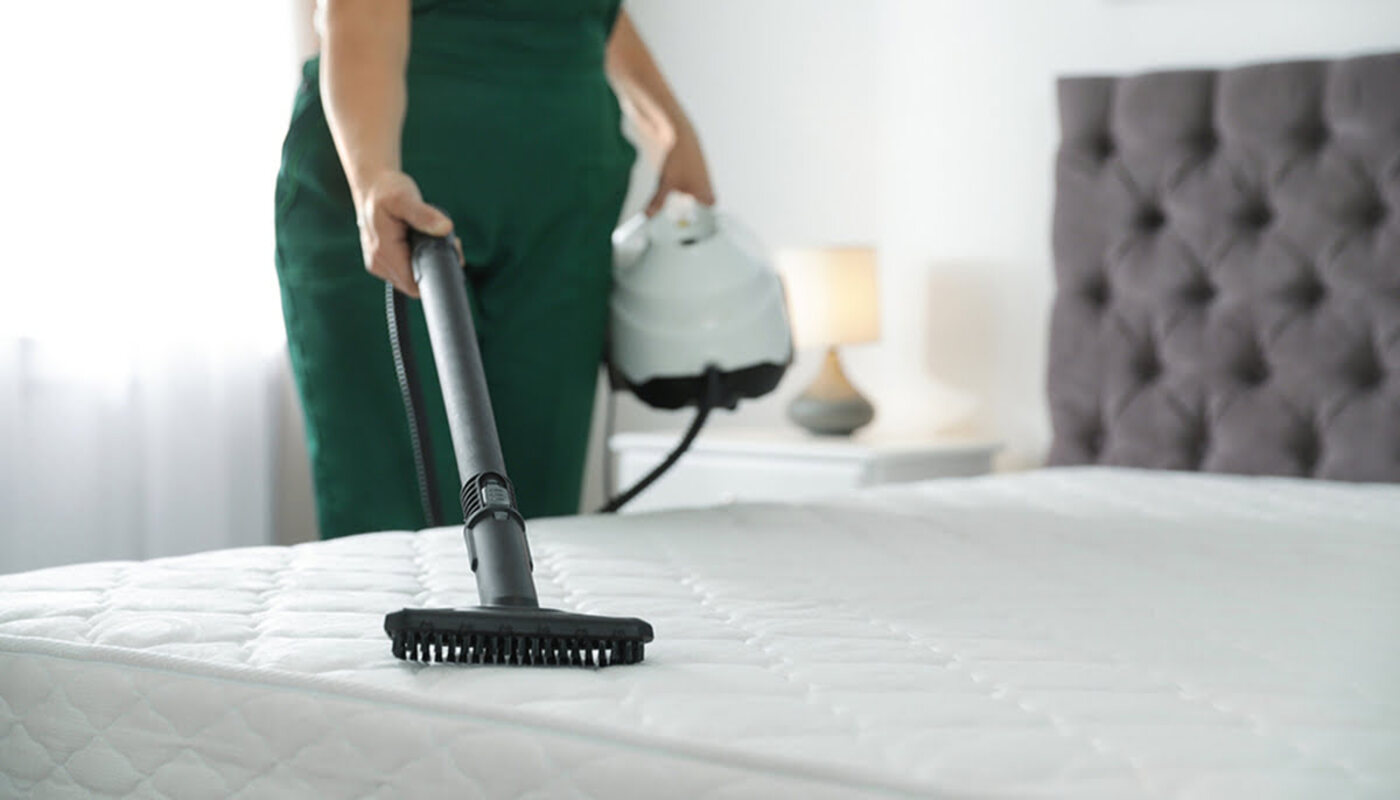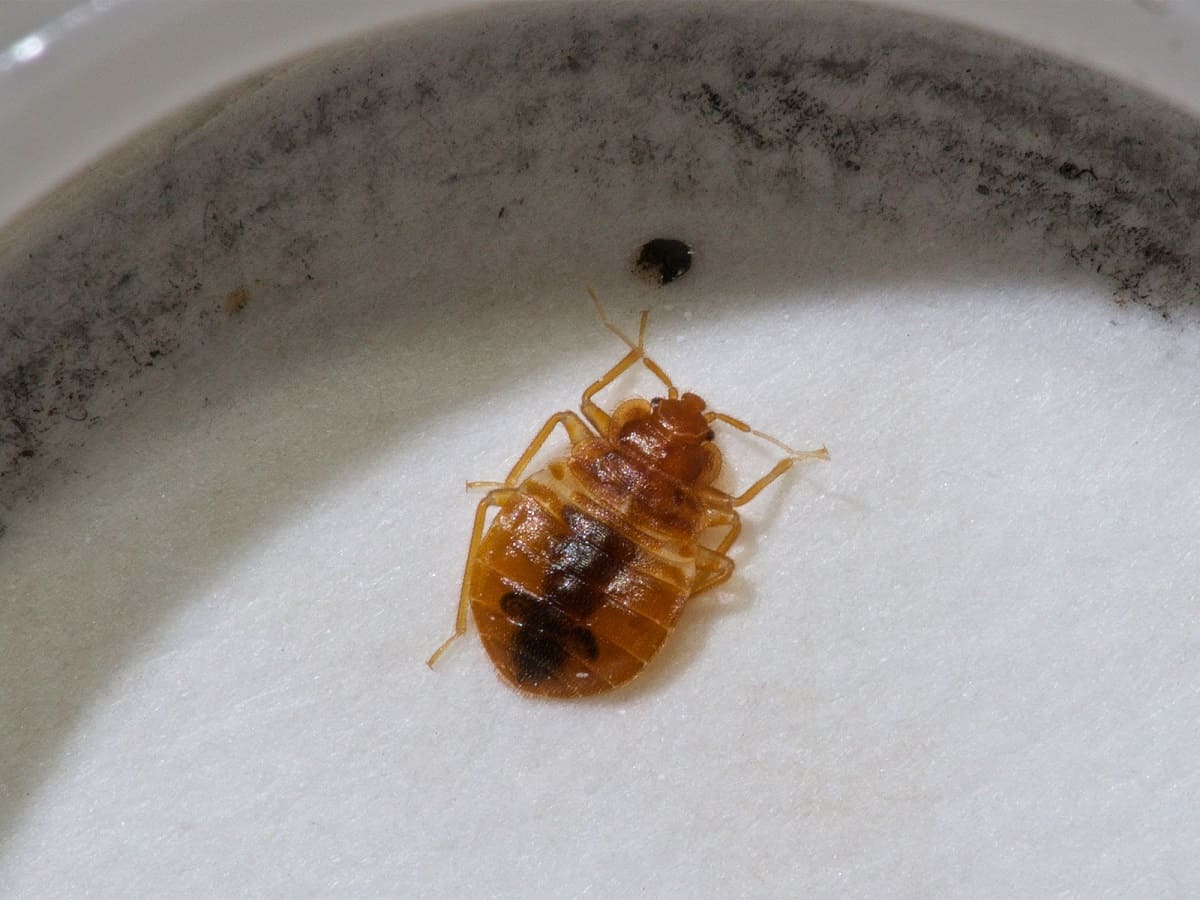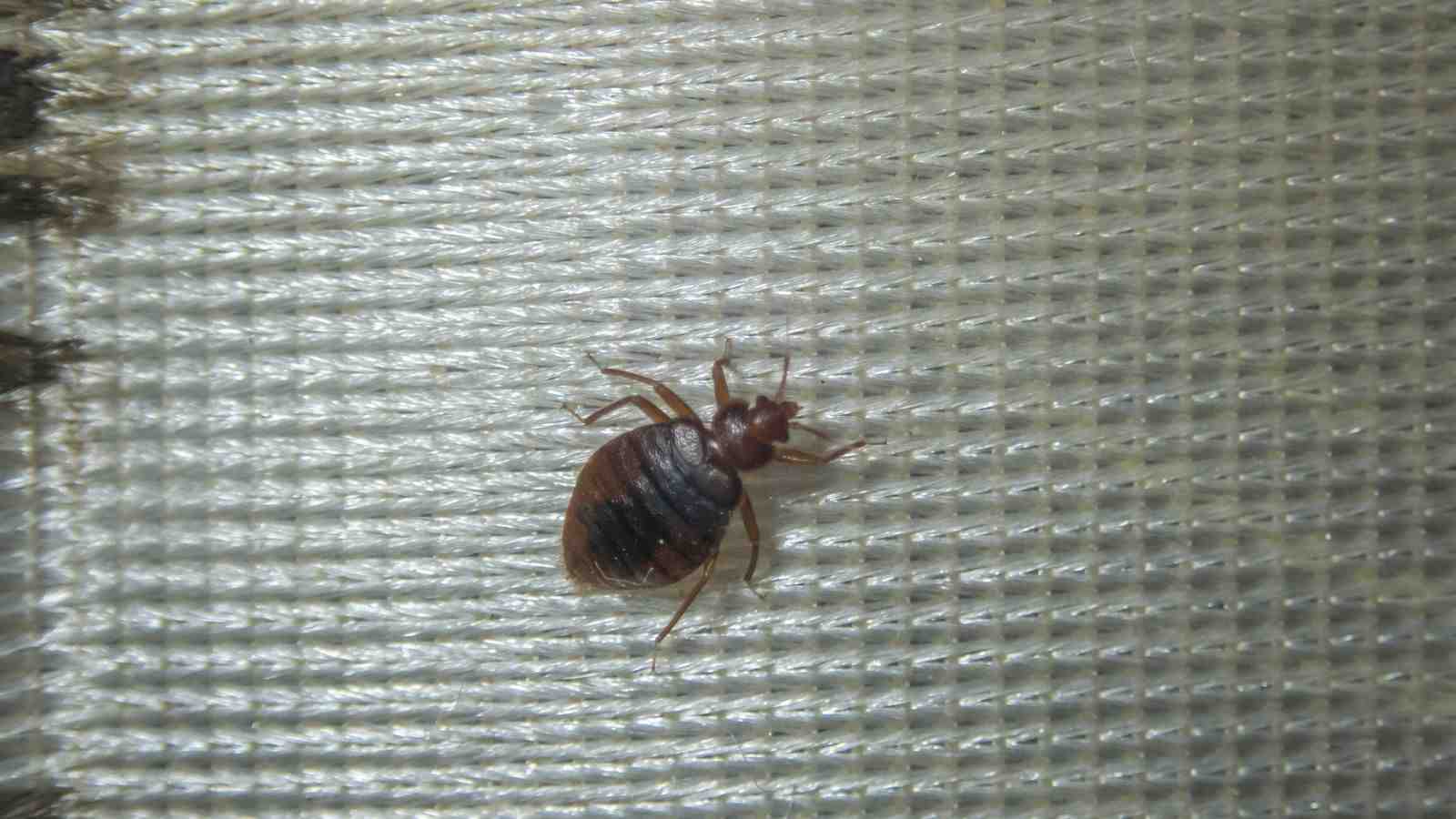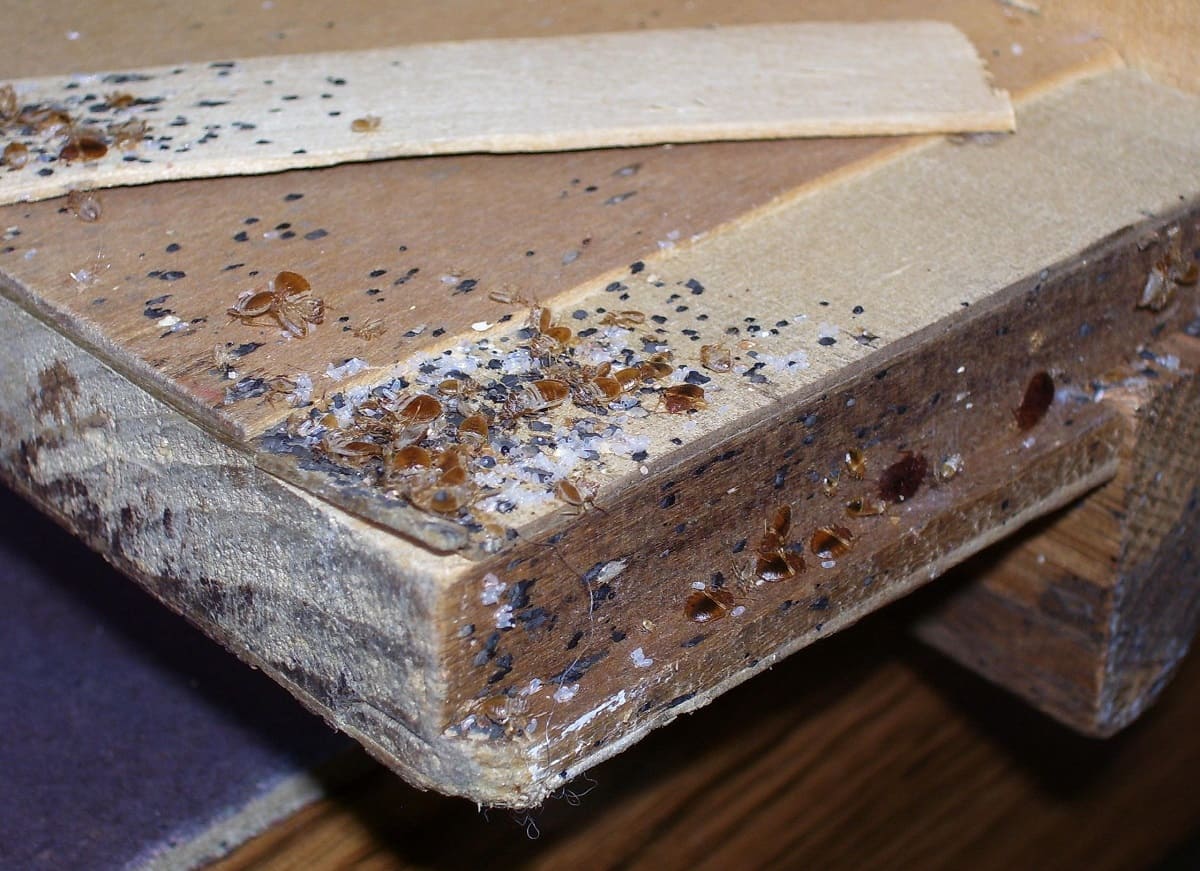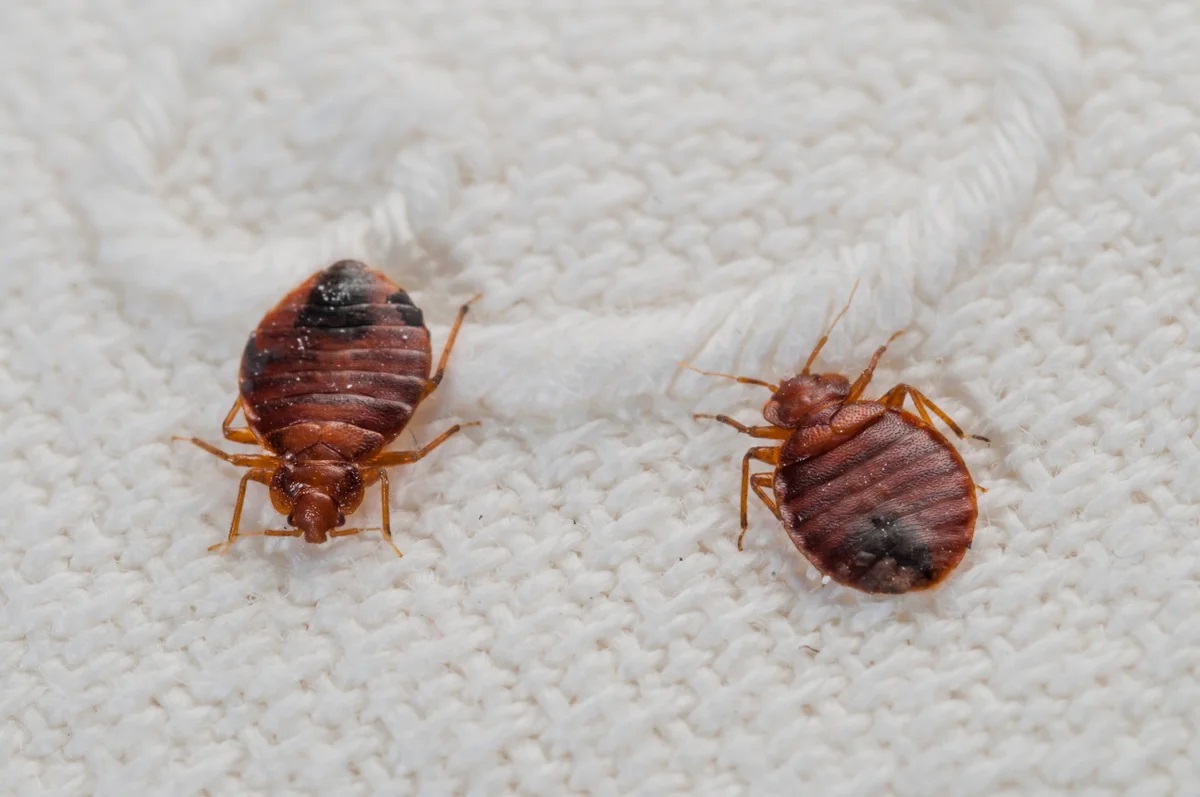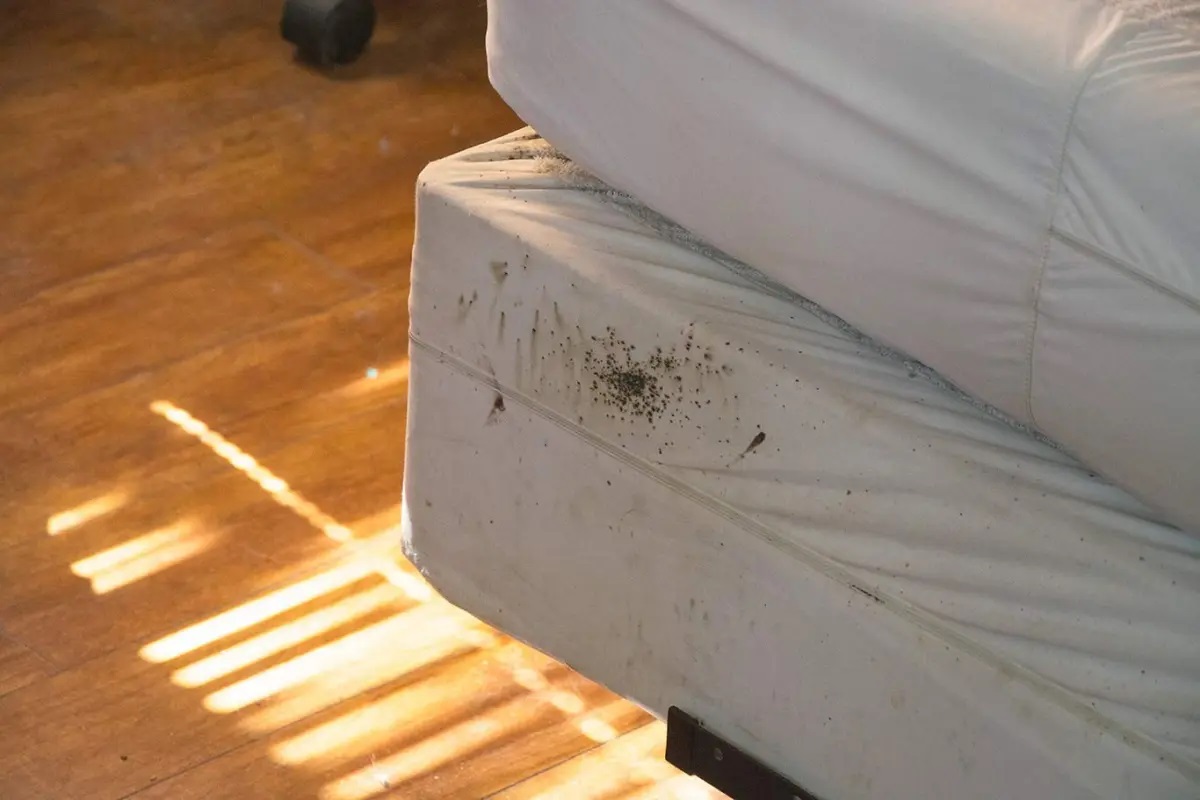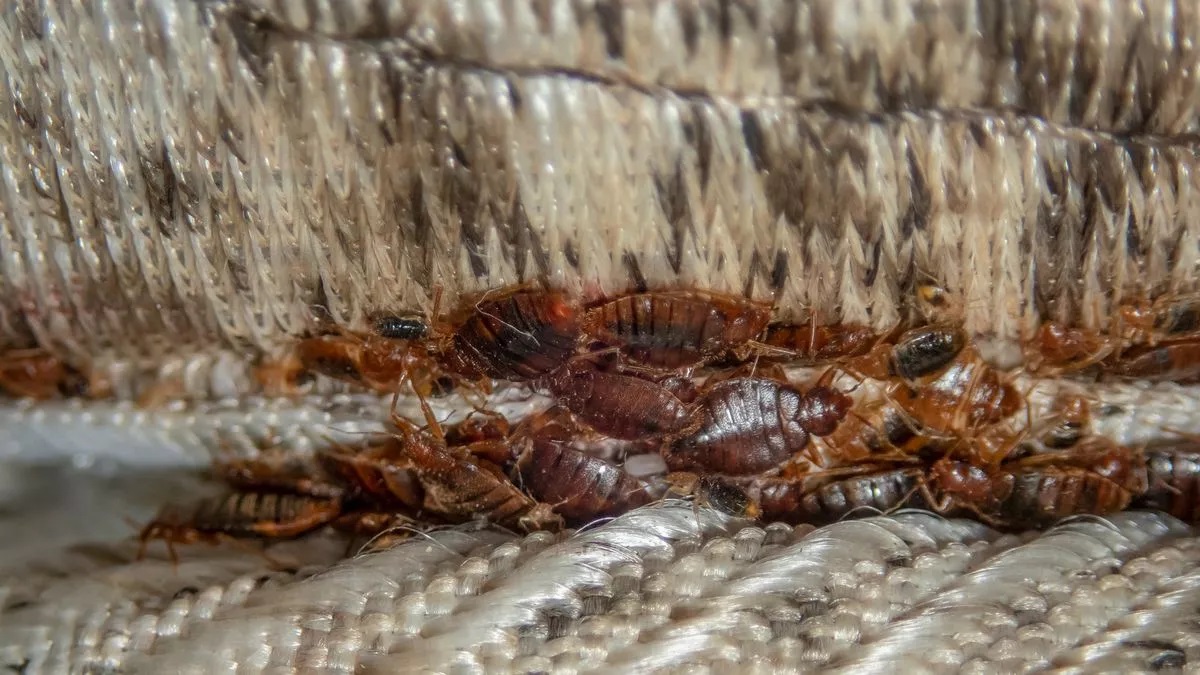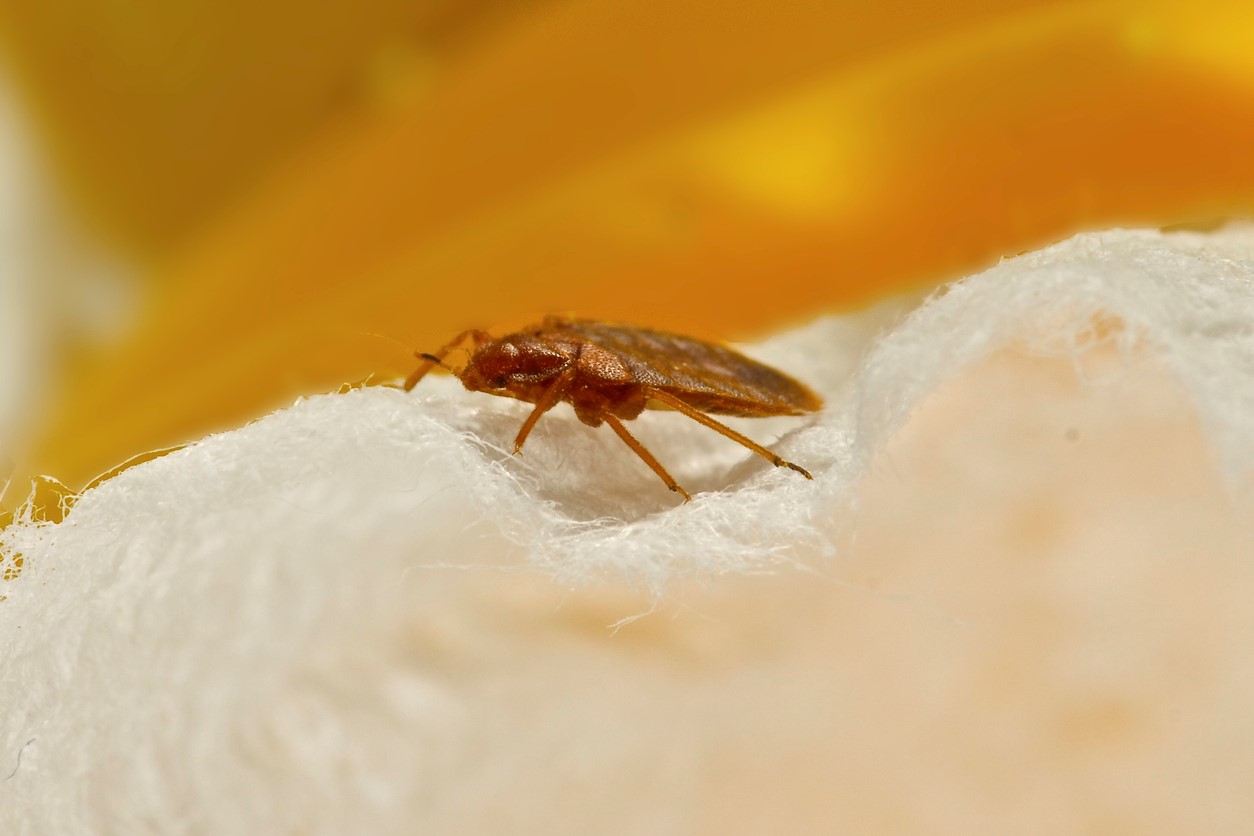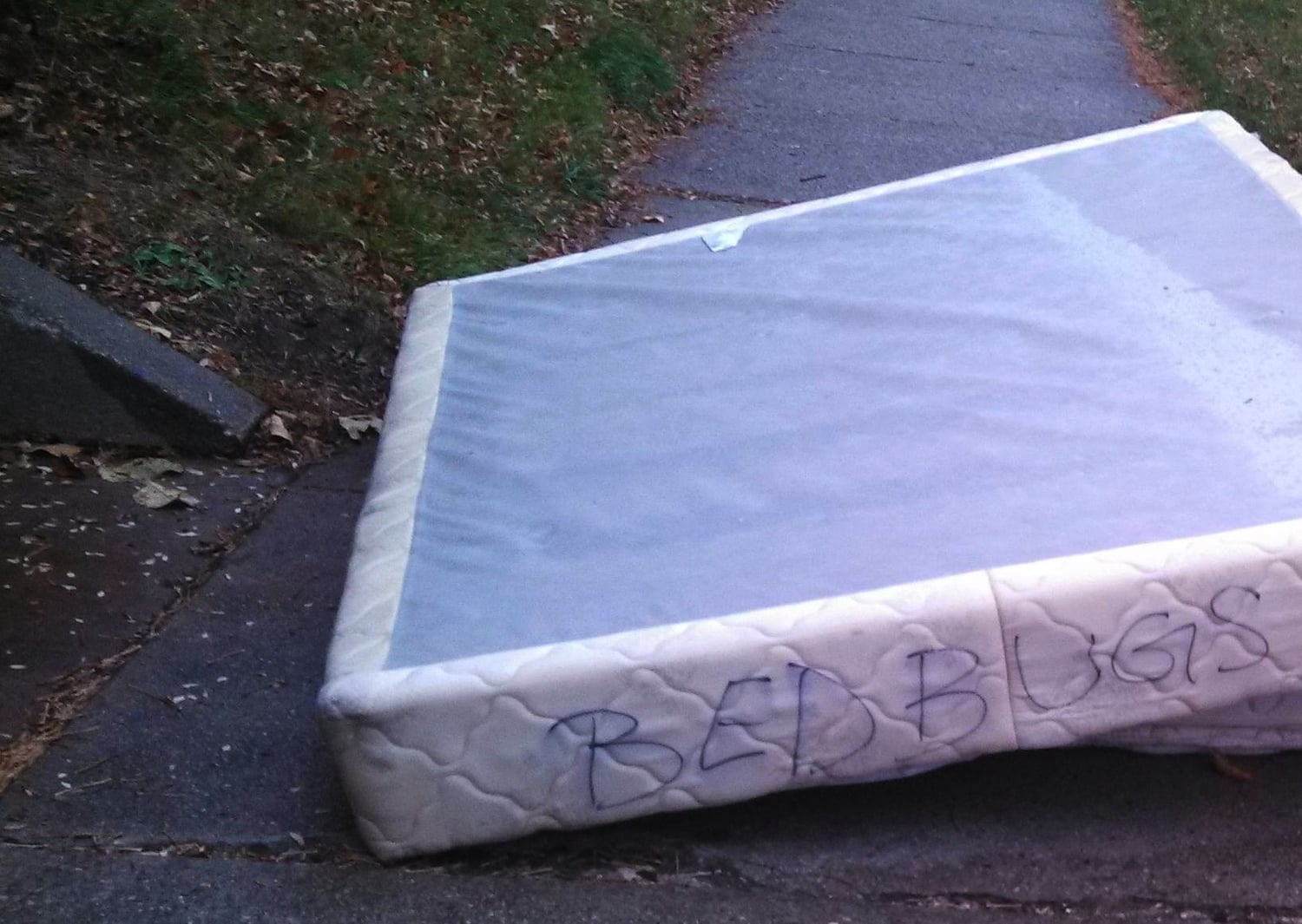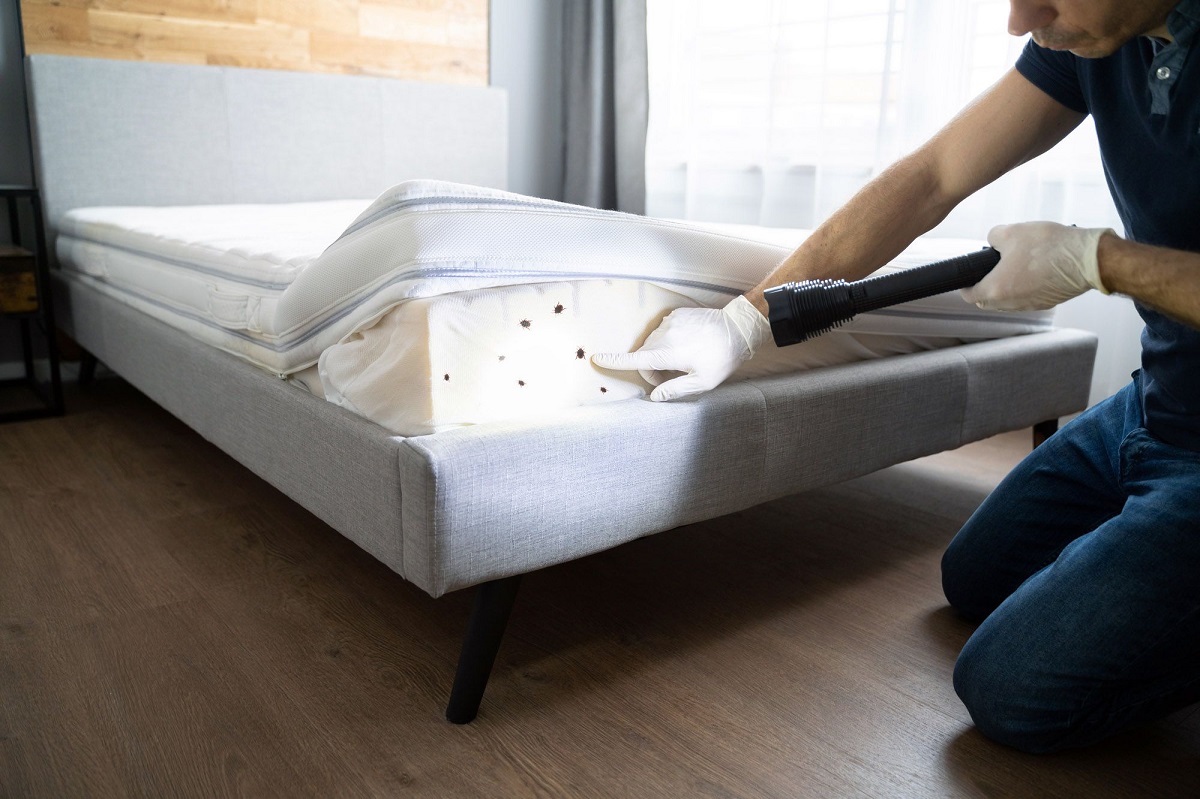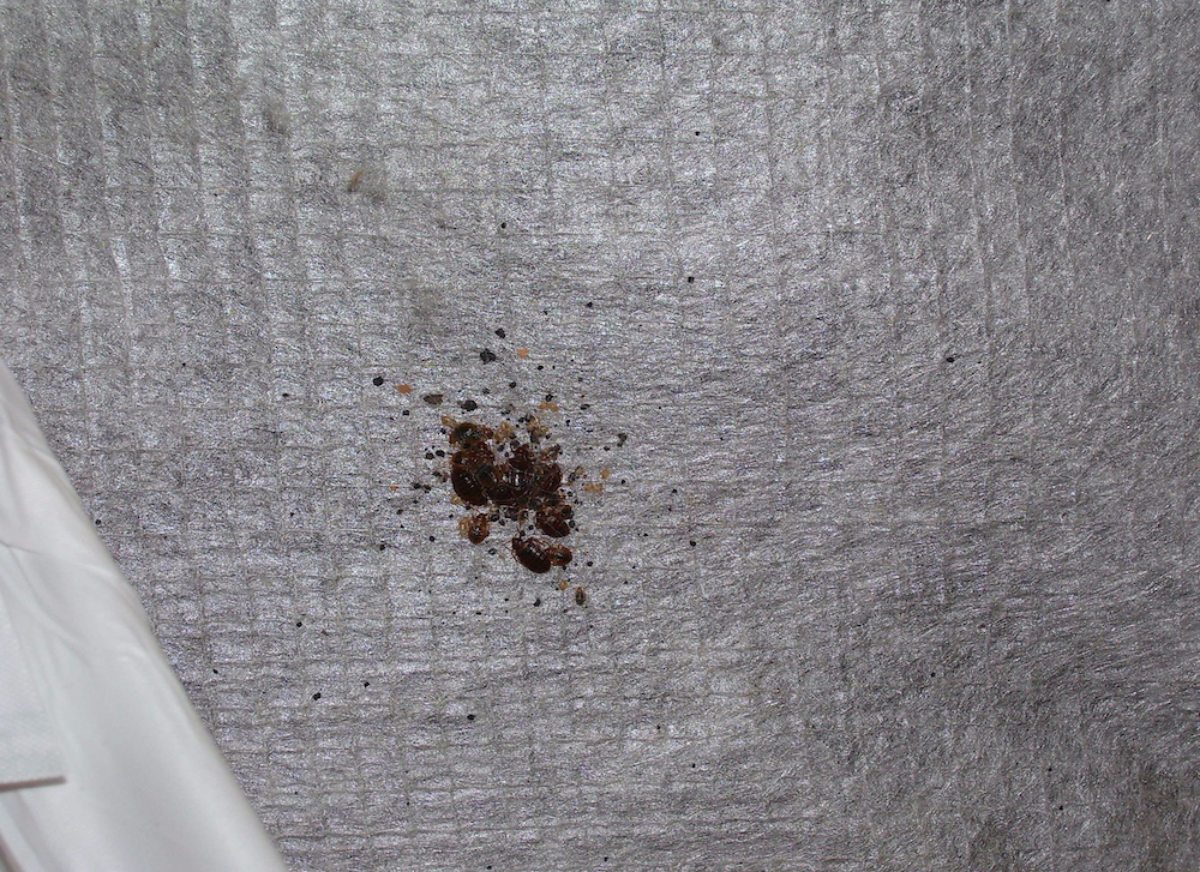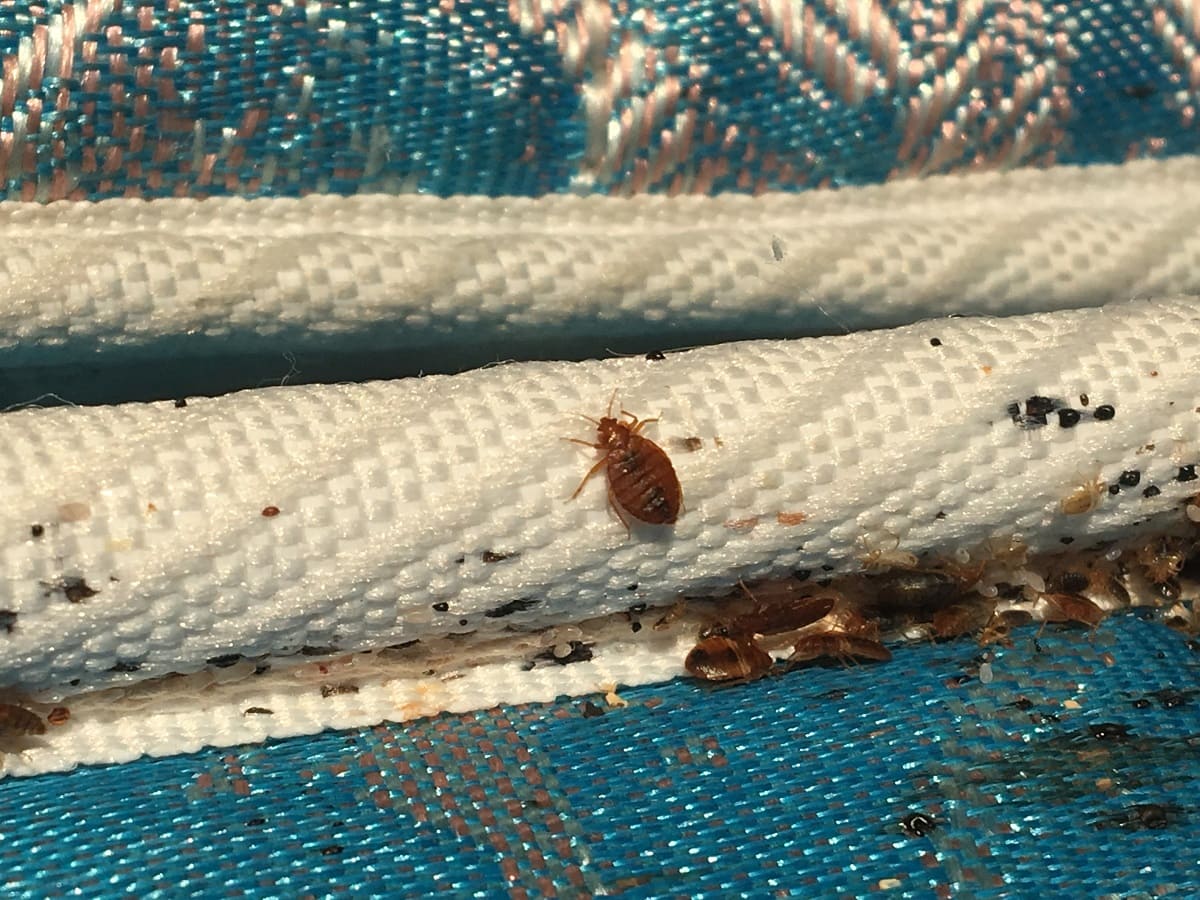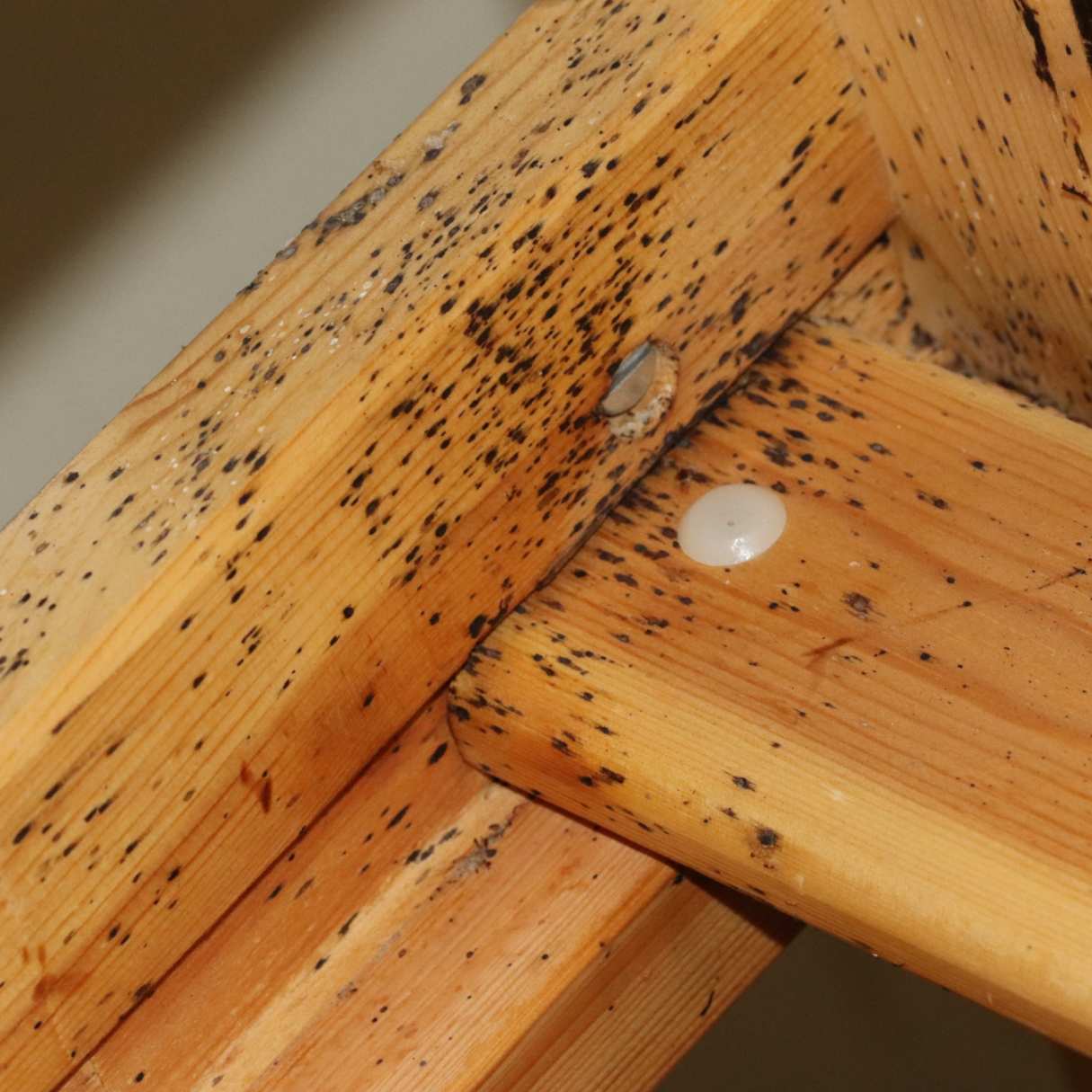Home>Furniture>Bedroom Furniture>How Far Can Bed Bugs Travel
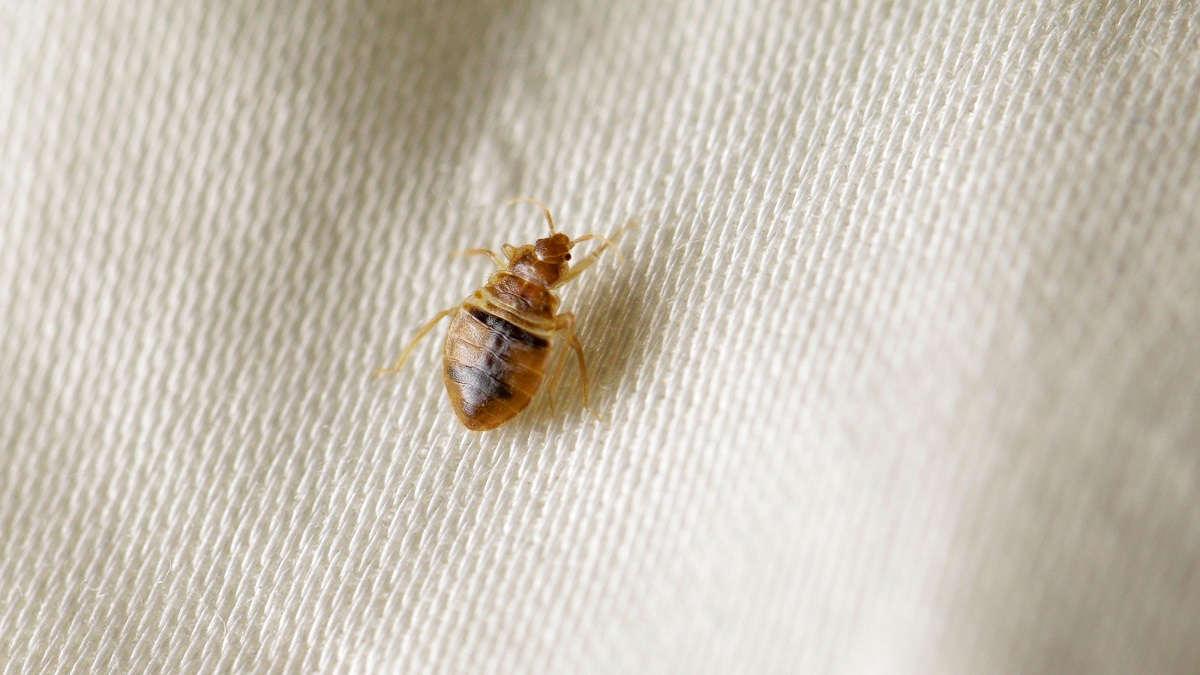

Bedroom Furniture
How Far Can Bed Bugs Travel
Modified: October 28, 2024
Discover how far bed bugs can travel and the impact they can have on your bedroom furniture. Learn how to prevent and treat bed bug infestations to keep your furniture safe.
(Many of the links in this article redirect to a specific reviewed product. Your purchase of these products through affiliate links helps to generate commission for Storables.com, at no extra cost. Learn more)
Introduction
Bed bugs are pesky pests that can infiltrate our homes and wreak havoc on our sleep. They are tiny, flat, and notoriously difficult to eliminate once they settle in. One of the biggest concerns when it comes to bed bugs is how far they can travel. Understanding their travel capabilities is crucial for effective prevention and control strategies.
Bed bugs are known to be excellent hitchhikers, and their ability to travel relies on a variety of factors. By exploring these factors and understanding their behavior, we can learn how to prevent their spread and protect our homes from infestation.
In this article, we will delve into the various factors that affect bed bug travel and discuss their ability to move both within a room and between different areas. We will also explore how bed bugs can be transported through different modes and the challenges posed by multi-unit buildings. Finally, we will provide some valuable tips on preventing bed bug travel to help you safeguard your home.
So, let’s dive in and unravel the mysteries of bed bug travel!
Key Takeaways:
- Bed bugs are adept hitchhikers, traveling through luggage, furniture, and clothing. Prevent infestations by inspecting second-hand items and practicing caution during travel.
- Multi-unit buildings pose unique challenges for bed bug control. Regular inspections, education, and collaboration are essential for preventing infestations and minimizing their spread.
Read more: How Far Can A Bed Bug Jump
Factors Affecting Bed Bug Travel
When it comes to bed bug travel, several factors come into play. Understanding these factors is essential for devising effective prevention and control strategies. Here are some key factors that can influence how far bed bugs can travel:
- Availability of Hosts: Bed bugs require a blood meal to survive and reproduce. The presence of suitable hosts, such as humans or animals, plays a significant role in their travel distance. The more hosts available, the more likely bed bugs are to spread.
- Environmental Conditions: Bed bugs are sensitive to environmental factors like temperature and humidity. Extreme temperatures can affect their movement and limit their travel distance. They tend to thrive in temperatures ranging from 70-80°F (21-27°C).
- Access Points: Bed bugs can crawl through tiny cracks and crevices, making it easier for them to travel. The presence of openings in walls, floors, and furniture provides them with additional pathways to move around.
- Clutter: Cluttered areas provide hiding spots and harborage areas for bed bugs. When there are numerous items in close proximity, it becomes easier for them to travel from one object to another and spread throughout a room or property.
- Chemical Repellents: Certain chemicals and repellents can deter bed bug movement. While these repellents may not completely eliminate the infestation, they can hinder their ability to travel long distances.
- Life Stage: Bed bugs go through multiple life stages, including egg, nymph, and adult. The younger nymphs are generally more mobile and can travel greater distances compared to adult bed bugs.
It is important to note that bed bugs do not possess wings and cannot fly like other insects. Their primary mode of travel is crawling. However, they are surprisingly agile climbers and can navigate various surfaces, including walls, ceilings, and furniture.
Now that we understand the factors that can affect bed bug travel, let’s explore how their movement plays out within a single room.
Infestation Spread Within a Room
Once bed bugs have infiltrated a room, they can quickly spread and establish infestations in various areas. Understanding how they move within a room is crucial for effective containment and control. Here are some key points to consider:
- Harborage Areas: Bed bugs are experts at finding hiding spots. They are drawn to dark, secluded areas where they can easily hide and reproduce. Common harborage areas include mattress seams, bed frames, headboards, furniture crevices, electrical outlets, and baseboards.
- Travel to Feeding Sites: Bed bugs need to feed regularly, usually on human blood. They are predominantly nocturnal creatures and tend to emerge from their hiding spots at night to feed. They are attracted to the carbon dioxide and body heat emitted by sleeping individuals. They can crawl considerable distances, up to 20 feet or more, to reach their feeding sources.
- Infestation Expansion: If the conditions are favorable, bed bugs will start reproducing and expanding their population within a room. Female bed bugs can lay up to 5 eggs per day and over 500 eggs in their lifetime. As the infestation grows, bed bugs will disperse to surrounding areas, increasing the risk of an extensive infestation.
- Travel Through Wiring and Pipes: In some cases, bed bugs can crawl through openings in the walls or utilize wiring and plumbing pipes to travel between rooms or floors. This makes it particularly challenging to contain an infestation and prevent further spread.
It’s important to note that bed bugs are not solely confined to the bed or sleeping areas. They can be found in other areas of the room, such as upholstered furniture, curtains, and even behind picture frames. Regular thorough inspections of these areas are essential to detect and address infestations early.
While bed bugs can certainly move within a room, their ability to travel between different areas is also a major concern. Let’s explore this in the next section.
Travel Distance Between Rooms
While bed bugs generally prefer to stay close to their food source, they can travel significant distances to find new hosts or establish new infestations. The distance bed bugs can travel between rooms depends on several factors:
- Proximity: The closer the infested room is to the target room, the easier it is for bed bugs to travel. If the rooms are adjacent or connected, bed bugs can easily crawl from one room to another.
- Access Points: Bed bugs can use various access points to enter neighboring rooms, such as electrical outlets, cracks in walls, pipes, and ventilation systems. These openings provide them with pathways to crawl through and reach new areas.
- Presence of Hosts: If a neighboring room has suitable hosts, such as humans or animals, the likelihood of bed bugs traveling to that room increases. Bed bugs are opportunistic and will seek out feeding opportunities wherever they can find them.
- Clutter: Cluttered areas provide more hiding spots for bed bugs and make it easier for them to travel between rooms. The more objects and items there are, the more possible transportation avenues bed bugs have.
It is essential to understand that bed bugs cannot travel long distances like fleas or ticks. Unlike these pests, bed bugs do not have powerful jumping abilities. Their movement is limited to crawling, which typically restricts them to areas in close proximity to their harborage areas.
However, in certain situations, bed bugs have been known to infest multiple rooms or even multiple floors of a building. This is often seen in places with a high turnover of guests, such as hotels, dormitories, and apartments. Regular inspection and early detection are crucial to prevent the spread of an infestation to other areas.
While bed bugs can move between rooms, their ability to hitchhike on objects and travel through different modes of transportation is another significant concern. Let’s delve into this in the next section.
Hitchhiking and Transportation Modes
One of the primary ways that bed bugs can travel between different locations is through hitchhiking. Bed bugs have a remarkable ability to cling onto various objects and hitch a ride to new areas. Here are some common modes of transportation for bed bugs:
- Luggage and Bags: Bed bugs are notorious for infesting luggage and bags, especially when people travel. They can easily crawl into suitcases, backpacks, and purses, hitching a ride to hotels, houses, or other destinations.
- Furniture and Upholstery: Infested furniture, such as couches, chairs, and mattresses, can serve as vehicles for bed bug travel. When second-hand furniture or upholstery is brought into a home, it’s essential to inspect it carefully to avoid introducing bed bugs.
- Clothing and Bedding: Bed bugs can attach themselves to clothing, bedding, and even stuffed animals. These items can unknowingly transport bed bugs from one location to another, allowing them to infest new environments.
- Public Transportation: Bed bugs can hitchhike on public transport systems such as buses, trains, and planes. They can crawl onto seats or cling to the belongings of commuters, facilitating their spread to different areas.
- Shared Spaces: Shared spaces like office buildings, libraries, and movie theaters can be breeding grounds for bed bugs. Items like bags, jackets, and personal belongings can unknowingly carry bed bugs from infested areas to new locations.
It’s important to be vigilant and take precautions when traveling or entering shared spaces. Inspecting luggage, washing and drying clothing on high heat, and keeping personal belongings away from potential bed bug hotspots can help reduce the risk of bringing bed bugs into your home.
Remember, bed bugs are not attracted to dirt or poor hygiene; they are attracted to warmth, carbon dioxide, and the presence of hosts. Anyone can be at risk of encountering bed bugs, regardless of their cleanliness or living conditions.
Next, let’s explore how bed bugs can travel within multi-unit buildings and pose challenges for control and prevention.
Bed bugs can travel up to 20 feet from their hiding spots in search of a blood meal. To prevent their spread, regularly inspect and clean your bedding, furniture, and surrounding areas.
Read more: How Long Can Bed Bugs Live Without A Host
Bed Bug Travel in Multi-Unit Buildings
Multi-unit buildings, such as apartments, condominiums, and hotels, present unique challenges when it comes to controlling and preventing bed bug infestations. The close proximity of multiple living spaces and shared areas provides ample opportunities for bed bugs to travel between units. Here are some key aspects to consider:
- Shared Walls and Interconnected Spaces: Bed bugs can travel through cracks, crevices, and shared walls between adjacent units. If one unit becomes infested, bed bugs can easily crawl through these openings and infest nearby areas.
- Shared Laundry Facilities: Bed bugs can hitch a ride on clothing, bedding, and other items being transported to and from shared laundry facilities. Infested items can unknowingly reintroduce bed bugs into previously treated units or spread them to new locations.
- Common Areas and Common Furniture: Common areas such as lobbies, lounges, and fitness centers in multi-unit buildings can serve as hotspots for bed bug activity. Shared furniture items, like sofas and chairs, can become infested and facilitate the spread of bed bugs.
- Human Movement and Social Interaction: Visitors, guests, and residents moving between units can inadvertently carry bed bugs with them. The more social interaction and movement between units, the higher the risk of bed bug travel.
- Delayed Detection and Treatment: In multi-unit buildings, bed bug infestations can go undetected or unreported, allowing the pests to spread unchecked. Delayed detection and treatment can lead to widespread infestations that are more challenging and costly to eradicate.
To minimize the risk of bed bug travel within multi-unit buildings, it’s crucial for residents and property managers to follow preventive measures, such as:
- Regular Inspections: Residents should regularly inspect their living spaces for signs of bed bugs, such as dark spots on sheets, shed skins, or blood stains. Early detection can help prevent the spread of infestations.
- Education and Awareness: Informing residents about bed bugs, their signs, and preventive measures can promote a proactive approach to prevention and rapid reporting of suspected infestations.
- Professional Pest Control: Regular professional inspections and treatments by licensed pest control operators can help minimize the risk of bed bug infestations in multi-unit buildings and ensure swift and effective eradication if an infestation is found.
- Collaboration and Communication: Building management and residents should work together to address bed bug issues, share information, and implement preventive measures collectively.
Addressing bed bug infestations in multi-unit buildings requires a coordinated effort to prevent and control their spread effectively.
Now, let’s explore how bed bugs can travel long distances and the preventive measures you can take to avoid encountering them during your travels.
Long-Distance Bed Bug Travel
While bed bugs are primarily known for their ability to crawl short distances, they can occasionally engage in long-distance travel. Although less common, long-distance bed bug travel can occur under specific circumstances. Here’s what you need to know:
- Luggage and Travel: Bed bugs can hitch a ride on luggage, especially during travel. If you stay in an infested hotel room or come into contact with infested belongings, bed bugs can crawl into your luggage and accompany you to your next destination. This is why it’s crucial to inspect hotel rooms and your belongings before leaving.
- Shared Transportation: Bed bugs can also be transported through shared forms of transportation like buses, trains, and airplanes. They can crawl onto seats, attach to luggage, or cling to clothes, allowing them to travel far distances with unsuspecting passengers. Be cautious when using these modes of transport.
- Second-Hand Items: Purchasing used furniture or accepting hand-me-downs can introduce bed bugs into your home. These pests may be hiding in the cracks and crevices of infested items, making long-distance travel possible if the infested items are moved to a new location.
It’s important to note that long-distance bed bug travel is not as common as short-distance movement. Bed bugs are efficient at finding and establishing new harborage areas near their food sources. However, under certain conditions, they can inadvertently be transported over long distances.
To prevent long-distance bed bug travel, follow these preventive measures:
- Inspect Accommodations: When traveling and staying in hotels or other accommodations, thoroughly inspect the room for signs of bed bugs. Check the mattress seams, headboard, and furniture. If you find any indications of bed bugs, request a different room or consider finding alternate accommodations.
- Protect Your Luggage: Keep your luggage off the floor and away from the bed in hotel rooms. Use luggage racks or place your suitcase in the bathtub, as bed bugs are less likely to be present there. Additionally, consider using bed bug-proof luggage encasements to prevent hitchhiking bed bugs.
- Inspect Second-Hand Items: Before bringing used furniture or items into your home, meticulously inspect them for any signs of bed bugs. Pay close attention to joints, seams, and cracks. If in doubt, consider treating the items before introducing them to your living space.
By being vigilant and taking preventive measures, you can reduce the risk of encountering bed bugs during your travels and minimize the chances of inadvertently spreading them.
Now, let’s delve into the essential steps for preventing bed bug travel and safeguarding your home.
Preventing Bed Bug Travel
Preventing bed bug travel is key to maintaining a bed bug-free home. By implementing a few preventive measures, you can significantly reduce the risk of bed bug infestations. Here are some essential steps to consider:
- Regular Inspections: Conduct regular inspections of your home, paying close attention to areas where bed bugs are likely to hide, such as mattress seams, headboards, furniture cracks, and electrical outlets. Early detection is crucial for timely intervention.
- Encase Mattresses and Box Springs: Use bed bug-proof encasements on your mattresses and box springs. These encasements create a protective barrier, preventing bed bugs from infesting these areas and making it easier to identify and treat any infestations.
- Reduce Clutter: Declutter your living spaces to minimize hiding spots for bed bugs. Remove unnecessary items, especially in bedrooms and other areas where you spend a lot of time. Keeping a tidy environment makes it easier to detect and treat any infestations.
- Seal Cracks and Openings: Seal cracks, crevices, and openings in walls, floors, and furniture using caulk or sealant. This will help eliminate potential entry points for bed bugs, reducing their ability to travel between rooms or from adjacent units.
- Practice Good Hygiene: Regularly clean and vacuum your home, paying attention to areas where bed bugs may hide. Washing bedding, linens, and clothing on high heat can help kill any potential bed bugs present.
- Be Cautious with Second-Hand Items: If you are acquiring used furniture or accepting second-hand items, thoroughly inspect them for signs of bed bugs. Consider treating them before bringing them into your home to prevent any potential infestations.
- Be Mindful of Travel: When traveling, inspect hotel rooms before unpacking and keep your luggage off the floor and away from the bed. Upon returning home, inspect your luggage and wash and dry your clothing on high heat to kill any potential bed bugs.
- Seek Professional Help: If you suspect or find a bed bug infestation in your home, it is best to consult with a professional pest control company. They have the expertise and tools to effectively eradicate bed bugs and prevent their further spread.
Remember, prevention is key when it comes to bed bugs. By following these preventive measures and staying vigilant, you can minimize the risk of bed bug travel and protect your home from infestations.
Now that we’ve covered the important steps for preventing bed bug travel, let’s summarize what we’ve discussed.
Conclusion
Bed bugs are elusive pests that can quickly turn our homes into infestation zones, causing sleepless nights and frustration. Understanding how bed bugs travel is crucial for effective prevention and control measures. Through our exploration of the factors affecting bed bug travel, infestation spread within a room, travel distance between rooms, hitchhiking and transportation modes, bed bug travel in multi-unit buildings, long-distance bed bug travel, and preventive measures, we have gained valuable knowledge on how to safeguard our homes.
We learned that bed bugs are superb hitchhikers and can travel by clinging onto objects or people. Their ability to move within a room, between rooms in close proximity, and even between different locations relies on factors such as availability of hosts, environmental conditions, access points, clutter, chemical repellents, and life stage. While their primary mode of travel is crawling, they can also crawl through cracks, utilize shared spaces, and hitch a ride on personal belongings or used furniture.
In multi-unit buildings, the challenges of bed bug control are amplified due to shared walls, interconnected spaces, and common areas. Collaboration, regular inspections, education, and professional pest control are essential in tackling bed bug infestations in these settings.
Preventing bed bug travel requires a proactive approach. Regular inspections, encasing mattresses, reducing clutter, sealing cracks, practicing good hygiene, being cautious with second-hand items, and taking precautions when traveling play significant roles in preventing the introduction and spread of bed bugs.
By implementing these preventive measures and staying vigilant, we can significantly reduce the risk of bed bug infestations and protect our homes and sanity. Remember, early detection and prompt intervention are crucial in combating bed bugs.
Now armed with knowledge and understanding, go forth and take the necessary steps to prevent bed bug travel, ensuring a peaceful and bed bug-free environment in your home.
Frequently Asked Questions about How Far Can Bed Bugs Travel
Was this page helpful?
At Storables.com, we guarantee accurate and reliable information. Our content, validated by Expert Board Contributors, is crafted following stringent Editorial Policies. We're committed to providing you with well-researched, expert-backed insights for all your informational needs.
